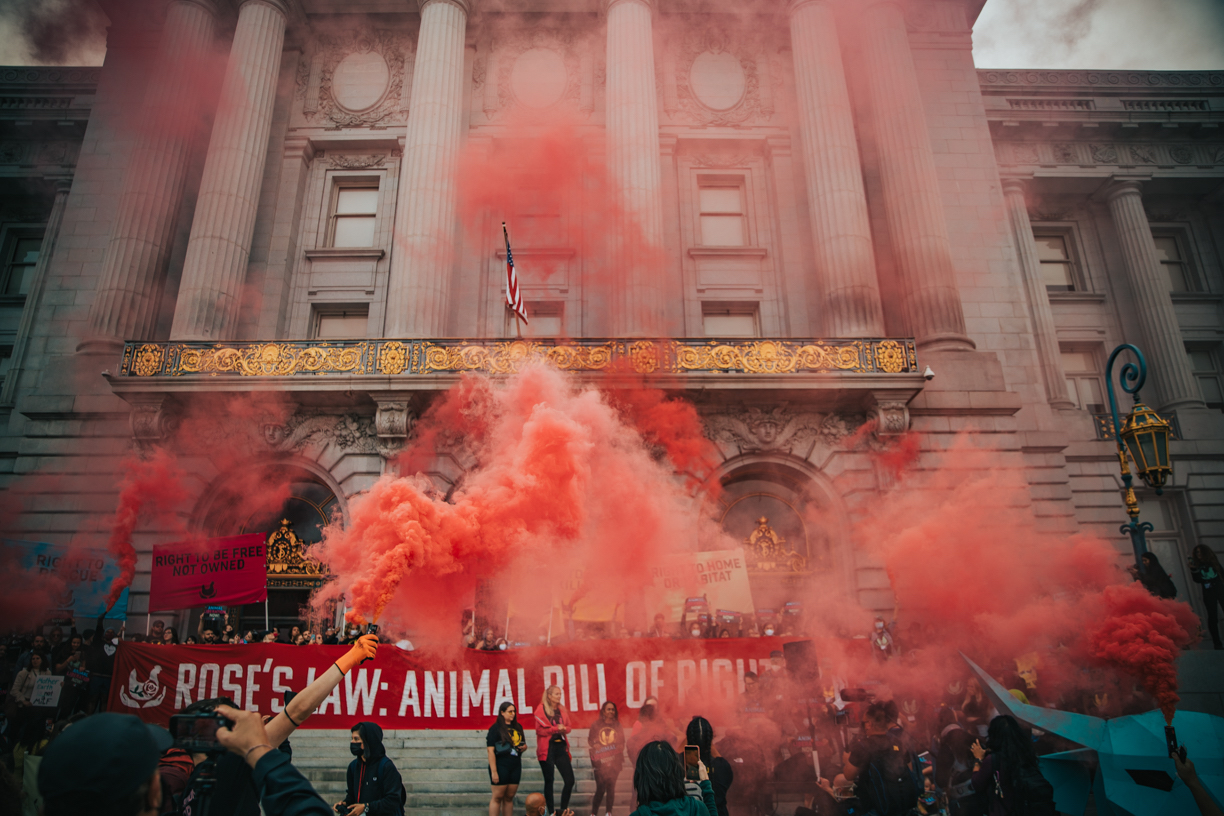How One Bird's Death Illustrates Our Nation’s Pandemic Failures (and its Hope)
The diseases suffered by Nina and her species never should have existed. Now, they threaten us all -- but her story should give us hope.

On Friday, July 10, a single bird, beloved by her caretaker, passed away at a farm sanctuary in Utah. Her life ended very differently from how it began.
At birth, her beak was seared off, and her toes mutilated. She was packed into a crowded shed where a large percentage of birds, sick or injured, would simply starve to death. The lucky ones would avoid that fate only to be later shoved into a transport truck, where they would suffer through extreme heat and crowded cages, with no food or water for sometimes days at a time.
Nina may never have reached that point because, like many birds, she lost the use of one of her eyes. Pecked or clawed in the eye by one of the thousands of other birds clamoring over one another, half of her universe disappeared. So too did her ability to protect herself. Turkeys are highly visual animals, who depend on their sight to navigate the world. When her left side went dark, it became a source of uncertainty and fear. A claw to the side; a stabbing peck to the head; a cascade of shifting bodies collapsing on her. All of these events would come suddenly now, without warning from her left side. And one of them would almost surely be the cause of her untimely end. In a factory farm, an animal that cannot protect herself is as good as dead.
Nina’s life shows the corruption of our society’s relationship with the other living creatures of this earth. No one who looked at her, outside of the factory farm context, could possibly justify the suffering and fear that plagued her. An individual who had raised a single bird, and allowed her to be pecked blind, tortured, and then slowly starved in a cage, would be rightly seen as a psychopath. But something changes when the suffering of one animal is systematized into an industry.
The absurdity of the situation -- a domesticated turkey, selectively bred to act perpetually as if she were a baby bird, turned into a hulking machine of suffering and profit -- is disguised by the fact that we so rarely see it. It is hidden by its scale (an individual suffering in a shed of thousands), its geography (slaughterhouses have shifted away from our urban centers to distant barren landscapes), and by concerted political effort (ag gag laws have banned the publication of photos from factory farms).

The corruption of our relationship to other living creatures, moreover, is not just threatening our values but our very existence. In Nina’s farm, I saw hundreds of birds who were engaging in open-mouthed breathing, a sign of respiratory distress. Any one of these birds could be patient zero in the next pandemic. The thousands of animals who are crowded and coughing, and in many cases already dead and rotting, are a cauldron of disease. That is why 70% of medically important antibiotics are used on farm animals, not human beings. Every shipment of turkey from these places, in turn, is a gamble on the future of humanity. When we threaten animals, we threaten ourselves.
The current pandemic, which is raging in American meat processors, is just the latest example. The climate crisis is fueled in part by the methane spewing from factory farms. Our air and water is polluted by toxic runoff, either directly from slaughterhouses or from the monoculture agricultural giants that feed them. A new version of H1N1 -- a deadly respiratory virus that has killed millions -- is slowly spreading from pigs to workers in China. A lethal form of bird flu, that mutated suddenly from a less deadly variant, erupted this September in a turkey farm in South Carolina. And our best guess as to the greatest killer of our modern era -- the Great Flu of 1918 -- is that it came from a poultry farm in Kansas.
All this risk and suffering, and all to kill animals for profit. Our institutions seem unable to embrace the most fundamental principles of justice: that “might” does not make “right,” that “different” does not mean “inferior.”
And the consequences -- for democracy, biodiversity, and for the future of life -- may be literally world-ending.
But Nina’s life also shows another and more hopeful story. The movement to restore our corrupted relationship with life is rapidly growing, and by restoring that relationship, we can restore the world. For Nina did not die in a factory farm. She was the one in a million who would be saved.

I came across Nina, as we were investigating a factory farm that had historically marketed itself as free range. When we saw her, pitiful and cowering in the darkness, she was half the size of the other birds. We rushed her to a veterinarian, then a sanctuary. And she was given the one gift that every animal on this earth deserves: a natural life.
Over the next 3 years, Nina learned that the world did not have to be a dark and violent place. She slept in her caretaker’s bedroom, taking treats from her hand in the mornings as the sun splashed in through the windows. She would purr like a cat when someone scratched her belly. And despite all the trauma and pain, she learned to have faith. Faith in her environment, in which she could now step freely, without walking over the rotting bodies of other birds. Faith in a safe future, where the darkness on her left side did not bring more uncertainty and pain. And most importantly faith in the kindness of others, even those much more powerful than her.
When I last visited Nina, I fought back tears as I petted her head. The emaciated fearful bird I first carried out of a factory farm had become a confident, preening master of her environment. Her friendliness towards human beings was legendary at the sanctuary -- despite the violence she suffered and saw by human hands -- as was her intense connection to her caretaker.
Her life, though now at its end, is a metaphor for the transformation the entire world is undertaking. Just days ago, a New York Times columnist pointed to our corrupted relationship with animals as one of the great moral tragedies of our age, that our grandchildren will look upon with shame. The rising power of plant-based meats, with Impossible Burgers on every American street corner, is only being amplified by slaughterhouse shutdowns due to the coronavirus. And thousands are newly joining movements for justice -- for people of color, for the climate, and for the animals -- as they recognize the violence deeply embedded in our society.
The times ahead will be difficult. But just as Nina overcame her fears, to discover a restored world, we as a nation can confront the suffering around us and find a brighter future. A world where our political systems are devoted to protecting the vulnerable, rather than caging or killing them. A world where not just all nations, but all species, live in harmony. A world where no living creature is forced to live in the darkness of a cage.
This world is not just possible. With all the forces moving in its direction, it is inevitable. And all we need to do, as individuals seeking to bring about that world, is have a little faith.
In memory of Nina, who passed away peacefully, please consider making a donation to Ching Farm Rescue and Sanctuary here.
Other articles

Tulare County Dairy Farms Are Poisoning Latino Communities

The Case for Systemic Change




